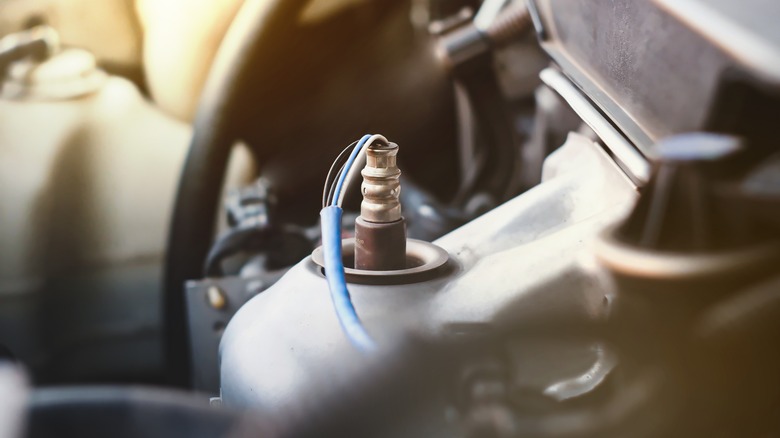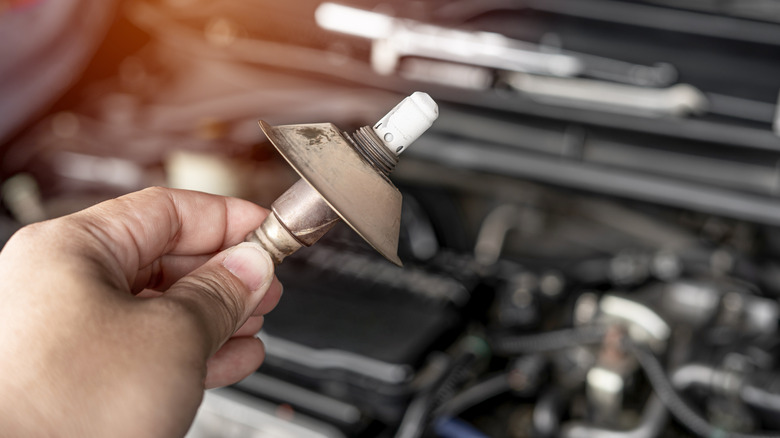What Oxygen Sensors In Your Car Actually Do & What Happens When They Go Bad
We've all experienced a check engine light coming on, knowing that unless it's taken care of immediately, it'll be a nagging long-term problem in the back of our minds. It's one of the most important symbols to know on your car's dashboard, but it also comes with a seemingly endless list of problems that could be the cause. One of those issues could be your oxygen sensors, but what do they actually do?
Oxygen sensors are tiny pieces of technology located in multiple spots in a vehicle. Most cars come with at least two. One is connected to the engine in the exhaust manifold, while the other lies within the exhaust system, just downstream of the catalytic converter. Given their name, you'd be correct to assume oxygen sensors monitor oxygen levels. They do this by measuring how much unburned oxygen is in the exhaust, sending signals to the vehicle's electronic control unit (ECU) to optimize the correct air-to-fuel ratio.
Oxygen sensors will notify the ECU when there is an imbalance in the mixture of oxygen and fuel in the system, prompting it to inject more or less fuel into the engine. The second sensor measures oxygen levels in the exhaust flow, determining how efficiently the catalytic converter works.
What happens when your oxygen sensors go bad?
Oxygen sensors will eventually go bad and need replacing, but they can last anywhere between 30,000 to 100,000 miles, according to Firestone. Thankfully, there are a few signs to tell when your oxygen sensors have gone bad.
Similar to when most things go wrong in your car, the check engine light will turn on when your oxygen sensors fail. It's actually one of the most common reasons behind that signal. However, don't immediately go and replace them yourself. If the light appears, you can use a code reader to diagnose your car. Like many cases, owning this car diagnostics tool could save you a lot of money. But if you don't have the tool on hand, take your vehicle to the shop and have the experts do it, as sometimes other issues can lead to an air-fuel imbalance.
You can also look out for bad smells and black smoke coming out of your tailpipe. When your oxygen sensors go bad, your car can sometimes overcompensate and throw more fuel into the engine. While this can cause a noticeable change in your gas mileage, it can also be what's causing the bad smells or black smoke pumping out of your exhaust. On top of that, bad oxygen sensors can cause your engine to perform poorly, including slow acceleration, misfires, and stalling. If you notice any of these signs, save yourself the headache and have your car inspected as soon as possible.

